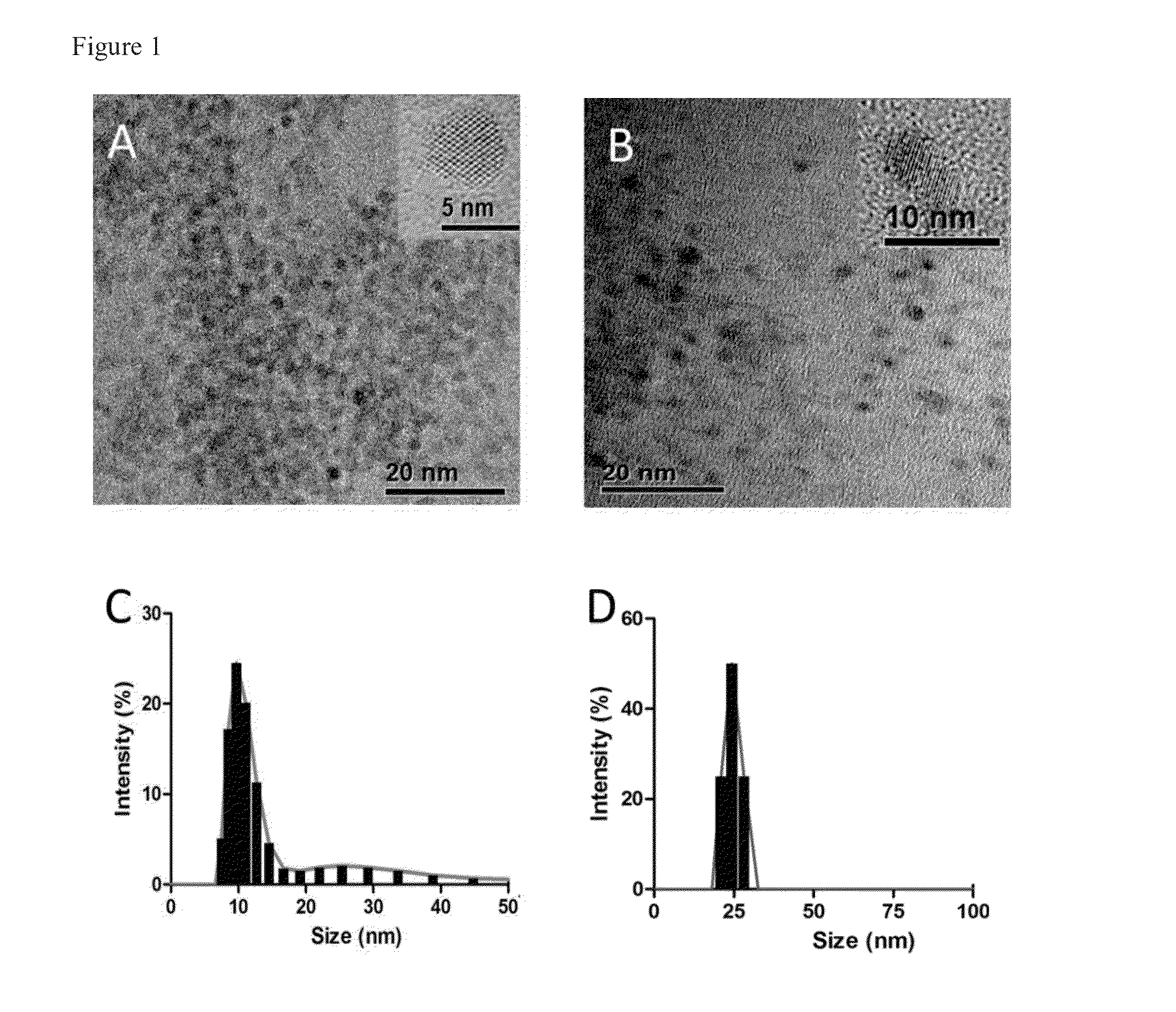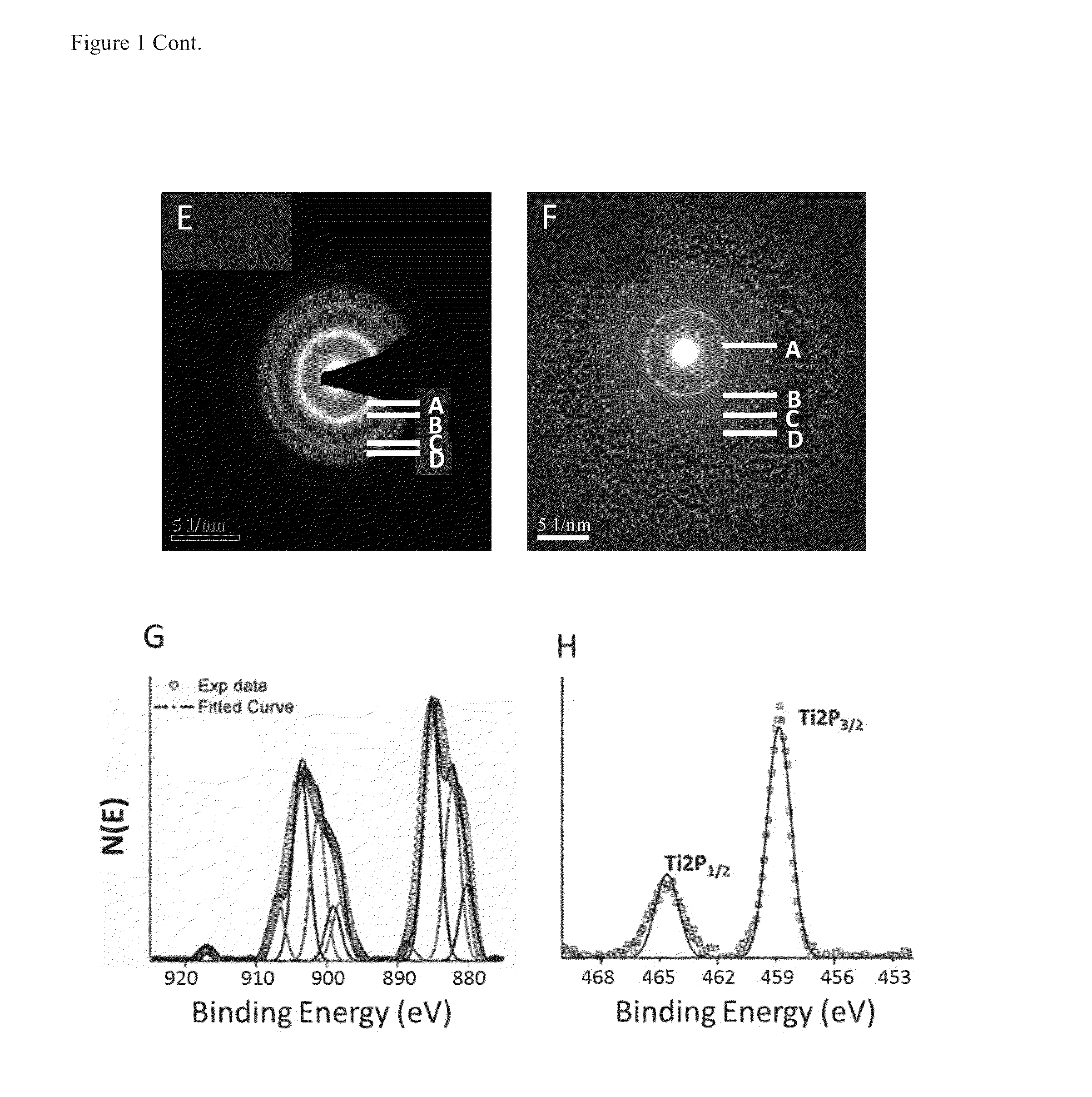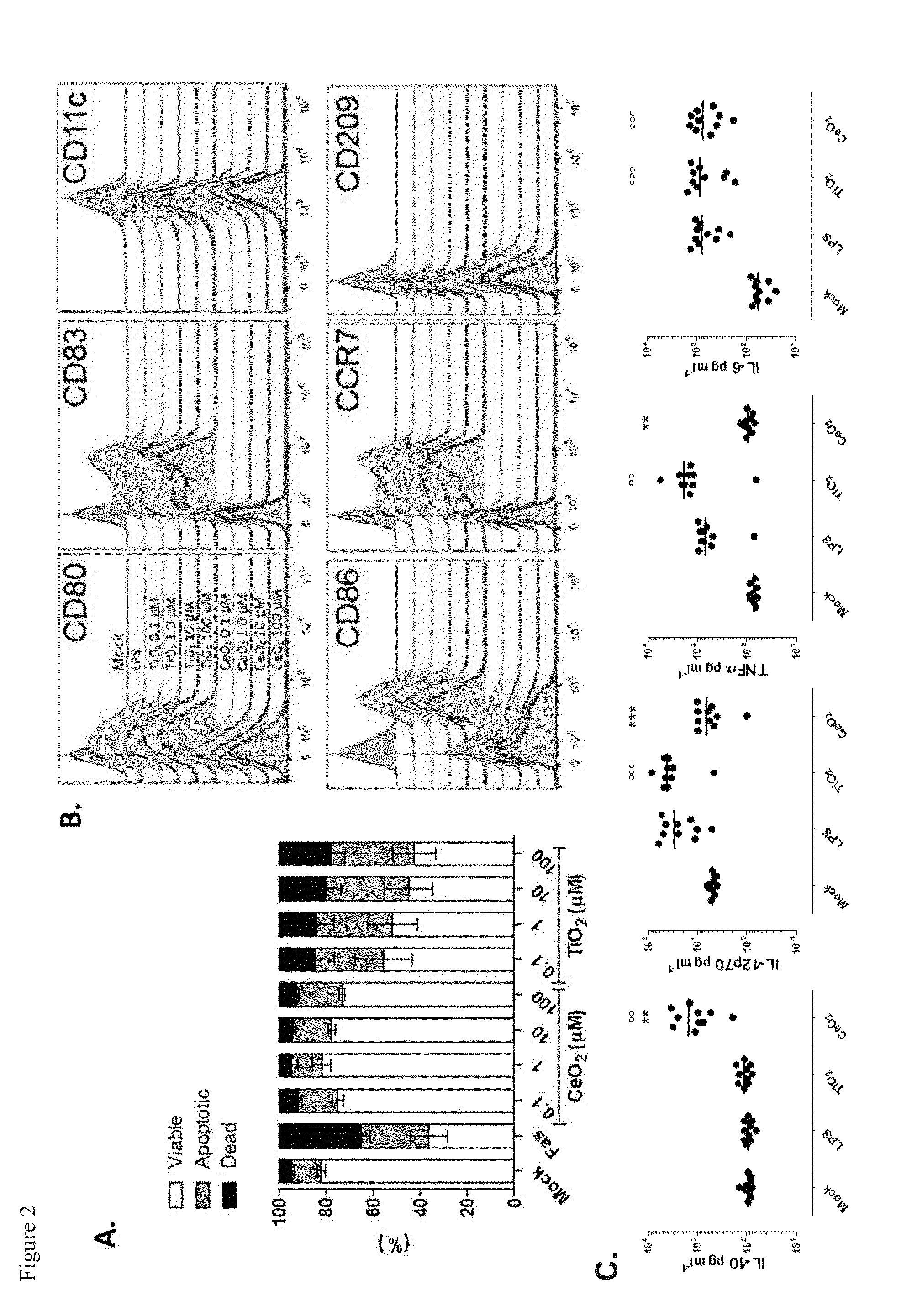Methods of using ceo2 and tio2 nanoparticles in modulation of the immune system
a technology of applied in the field of methods of using ceo2 and tio2 nanoparticles in the modulation of the immune system, can solve the problems of many complexities in the testing of nps
- Summary
- Abstract
- Description
- Claims
- Application Information
AI Technical Summary
Benefits of technology
Problems solved by technology
Method used
Image
Examples
example 1
[0102]Over 4 million tons of pigmentary TiO2 is consumed globally each year for uses including paints, papers, plastics, sunscreens, and cosmetics (Donaldson et al. (1996) Toxicol. Lett., 88, 293-8; Gilmour et al. (1997) Environ. Health Perspect., 105 (suppl 5), 1313-7; Goncalves et al. (2010) Toxicol. In Vitro, 24, 1002-8; Jin et al. (2008) Chem. Res. Toxicol., 21, 1871-7; Sayes et al. (2006) Toxicol. Sci., 92, 174-85; Vamanu et al. (2008) Int. J. Nanomedicine, 3, 69-74). CeO2 NPs also have wide applications, from solar cells, fuel cells, gas sensors, oxygen pumps, and refining glass / ceramic production to proposed biomedical applications (Celardo et al. (2011) Nanoscale, 3, 1411-20; Celardo et al. (2011) J. Exp. Ther. Oncol., 9, 47-51).
[0103]Beyond their broad commercial appeal and thus heightened risk for exposure, these two materials were chosen because they possess opposite redox behavior: CeO2 NPs (oxidant-scavenging) and TiO2 NPs (oxidant-generating), ...
example 2
Phenotypic Maturation of DCs
[0107]While metal oxide NPs may lack multiple danger signals common to complex biological immunogens, distinct redox-surface chemistry can provide the mechanisms necessary for innate activation via modulation of messengers like reactive oxygen species (ROS), for which innate danger sensors, such as the NLRP3 inflammasome, exist (Yazdi et al. (2010) Proc. Natl. Acad. Sci. USA 107, 19449-54). As part of the innate response, DCs undergo a maturation process, which may be broadly qualified by two classic physiological features: increased expression of surface costimulatory and MHC molecules (CD80, CD86, HLA-DR) and changes in chemokine receptor expression (CCR7).
[0108]DCs treated with as little as 1 μM TiO2 NPs induced expression of CD80 and CD86 and increased the expression of HLA-DR, comparable to the level induced by the positive control, LPS. On the other hand, FIG. 2B shows upregulation of CD83, a phenotypic hallmark of DC maturation, only at a higher Ti...
example 3
Induction of DC Cytokine Expression
[0110]In addition to the upregulation of costimulatory markers, DCs may also secrete anti- or pro-inflammatory cytokines, which can direct the immune response. Thus, the impact TiO2 and CeO2 NPs on DC cytokine secretion was studied. DCs were incubated in the presence or absence of a range of CeO2 or TiO2 NPs for 24 h followed by quantification of key cytokine levels in culture supernatants (FIG. 2C).
[0111]DCs treated with TiO2 NPs increased their production of IL-12, p70 and TNF-α, while CeO2 NPs enhanced IL-10 cytokine secretion (FIG. 2C). The proinflammatory cytokine production observed following TiO2 NP exposure was consistent with the mature phenotype demonstrated in FIG. 2B. The opposite surface chemistry, low porosity, and decreased surface area are among the physicochemical features that differ between the CeO2 and TiO2 NPs and that may contribute to the impact profile of CeO2 NPs on innate immunity. Similar to this finding (FIG. 2B) are stu...
PUM
| Property | Measurement | Unit |
|---|---|---|
| volume | aaaaa | aaaaa |
| volume | aaaaa | aaaaa |
| size distribution | aaaaa | aaaaa |
Abstract
Description
Claims
Application Information
 Login to View More
Login to View More - R&D
- Intellectual Property
- Life Sciences
- Materials
- Tech Scout
- Unparalleled Data Quality
- Higher Quality Content
- 60% Fewer Hallucinations
Browse by: Latest US Patents, China's latest patents, Technical Efficacy Thesaurus, Application Domain, Technology Topic, Popular Technical Reports.
© 2025 PatSnap. All rights reserved.Legal|Privacy policy|Modern Slavery Act Transparency Statement|Sitemap|About US| Contact US: help@patsnap.com



